How to create Confluence tabs: the step-by-step guide
Share on socials
How to create Confluence tabs: the step-by-step guide
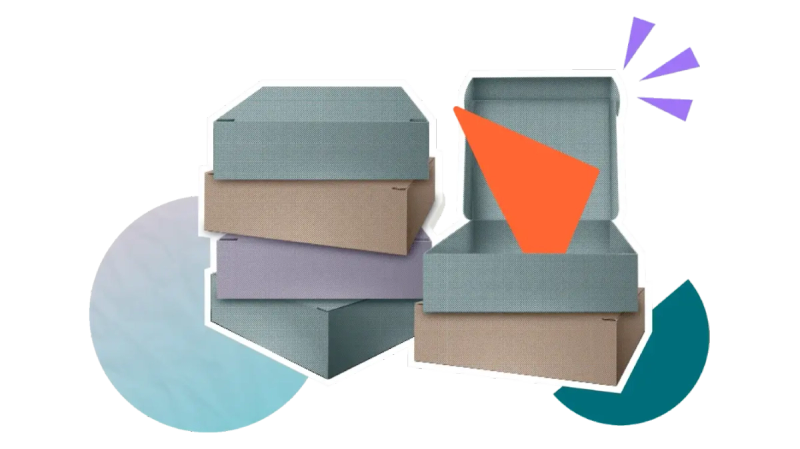
Jump to Section
Jump to section
What are tabs?
How to add tabs to a Confluence page
Tabs use cases
Reasons for using Confluence tabs
Make your pages even easier to navigate
Discover how to clean up your content and help users find answers faster with our guide to Confluence tabs.
Is your Confluence content getting harder to navigate? Are you fielding repeat questions because users can't find the right information?
Don't fear: there's a simple solution! With tabs, you can take control of your overwhelming content, easily structure your Confluence pages, and help users self-serve faster.
What are tabs?
Tabs are a popular and effective way to organise and present content on a page. They display information in a single compact block, with only one tab’s content visible at a time. Each tab has a clear label, allowing users to quickly understand what’s inside and click to reveal the relevant information.

You can use tabs in Confluence to organise your content by category or theme
In everyday life, you'll be most familiar with tabs in a web browser (such as Chrome, Firefox, or Safari). In Confluence, tabs sit within a page, with each tab acting as a container for related information, files, or even other macros.
How to add tabs to a Confluence page
As Confluence doesn't have tabs built-in, you'll need an app from the Atlassian marketplace. You have two options:
a) Tabs for Confluence 🗂️ - Best if you only want to add tabs to your Confluence pages.
b) Mosaic: Content Formatting Macros & Templates 🚀 - Best if you want an all-in-one toolkit to boost your page structure and make content more engaging. Alongside tabs, you get access to cards, numbered headings, tooltips, and much more.
Unsure which app is for you? Try them both free for 30 days:
- In edit mode, type “/tabs” and select the Tabs macro from the list.
- In the editor window, create your tabs. Click "+ Add tab" to add extra tabs. You can:
- Add icons
- Change the text alignment
- Display tabs horizontally or vertically
- Change the way your tabs look, including the colour of your tabs
- Press "Save". Congratulations, you've created some tabs. You should now see tab placeholders on your page!
- Add your content, including text, images or other macros, into each tab placeholder.
- When you're done, click "Publish" or "Update".
Best practices for making great tabs:
- Use clear names: Choose a short, relevant name for each tab so users know exactly what content it contains.
- Add icons for context: Use an optional icon to add visual context and make your table more engaging.
- Stay on brand: Click the Accent colour dropdown to choose a tab colour from your brand palette. Read our guide on creating colour palettes in Confluence.
Using tabs in Confluence: 4 examples
Tabs are incredibly versatile and can fit into almost any context. Here are a few examples to give you some inspiration for your own pages. All of these use the Tabs macro from Mosaic, which gives you maximum flexibility to create Confluence pages that work for your team.
Company hub
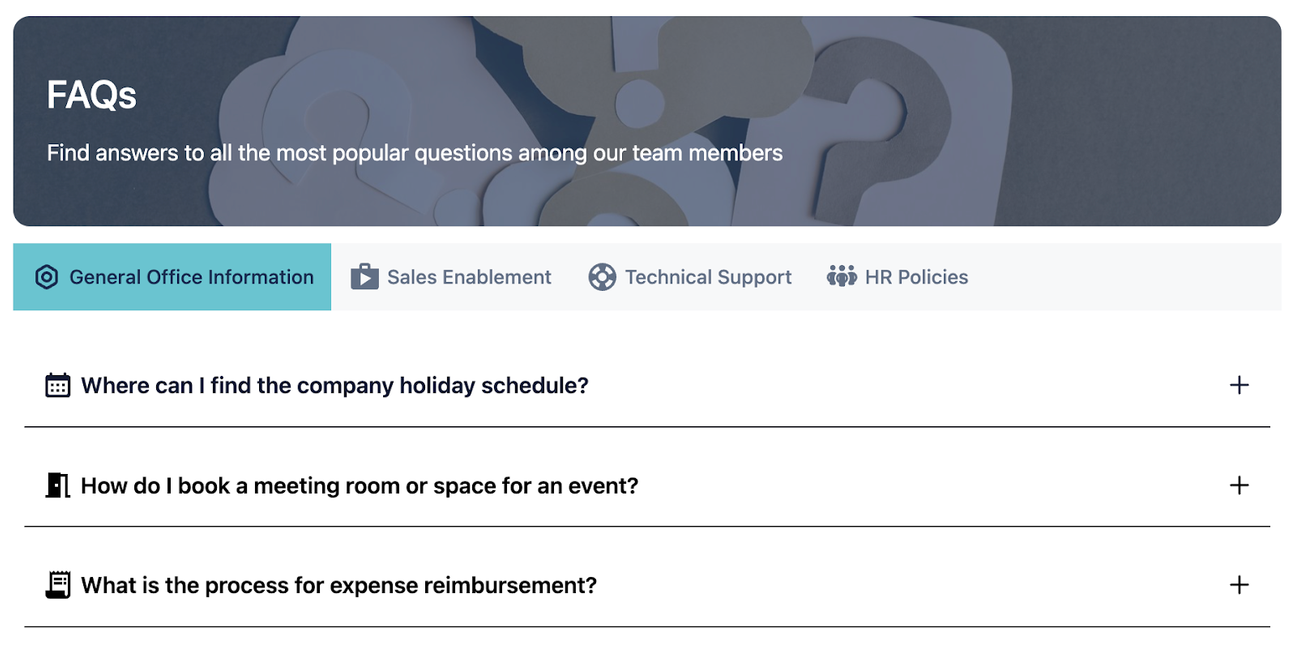
Use tabs to organise key information for your team, with separate sections for company policies, team directories, welcome videos, or IT setup guides. For detailed sections, you can combine tabs with the Advanced Expand macro (also included with Mosaic), keeping even the most detailed pages clean and easy to read.
Software documentation

If you're documenting a product that works across different platforms, tabs are perfect for separating instructions. Create tabs for "iOS," "Android," and "Web" so users can jump straight to the guide they need, or separate steps out on different tabs for visual and mental clarity.
For API documentation, you can even embed Confluence’s built-in Code snippet macro inside a tab to provide clear, easy-to-copy code examples.
For API documentation, you can even embed Confluence’s built-in Code snippet macro inside a tab to provide clear, easy-to-copy code examples.
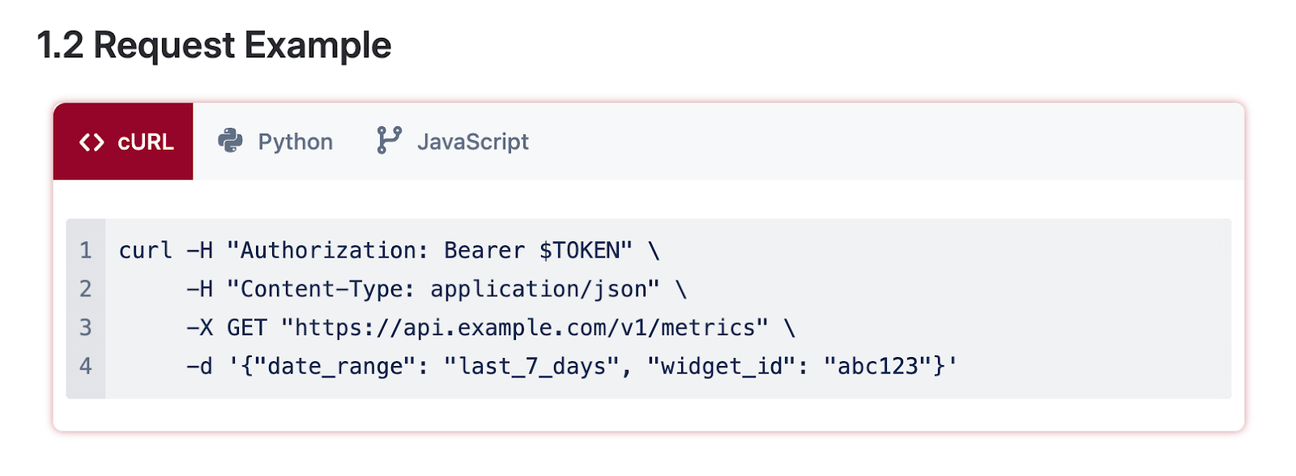
Project plan page
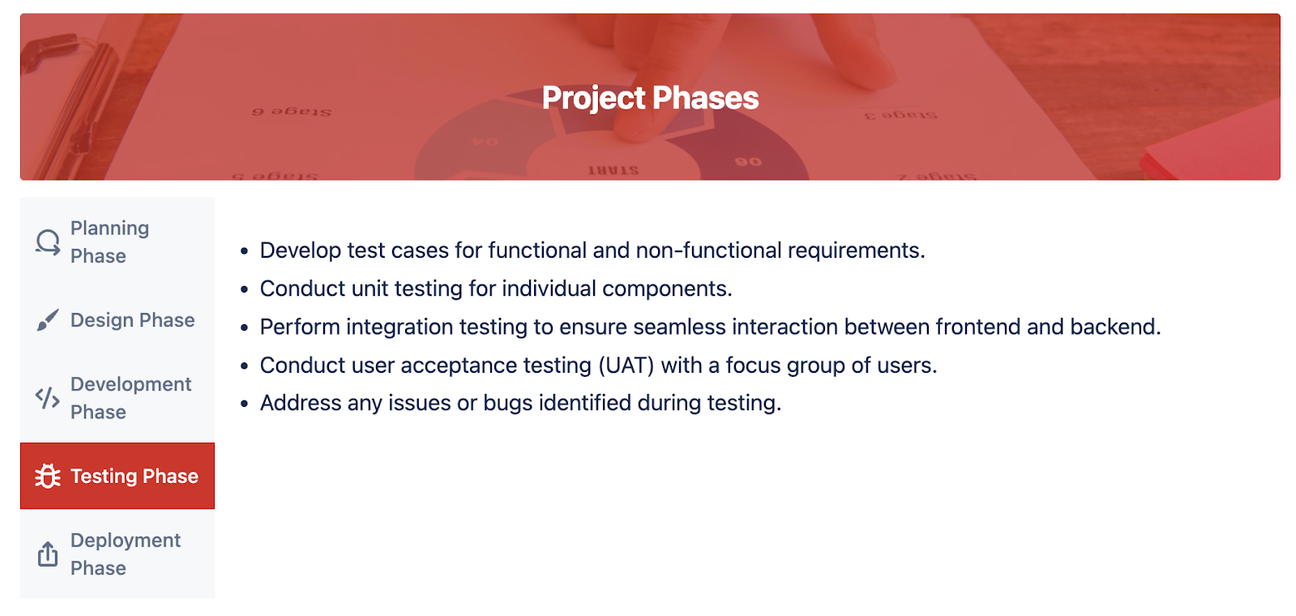
Keep your project pages organised by using tabs to separate different elements of your plan. Create tabs for each phase of your project, such as the Planning, Design, Development, Q&A, and Deployment stages, with clear outlines of milestones for each. You could also use tabs to neatly organise the high-level information of the project, such as Goals and Objectives, Timeline, Budget, or Teams and Responsibilities. These will provide at-a-glance information to key stakeholders without requiring them to dig through multiple pages.
Troubleshooting and support guides
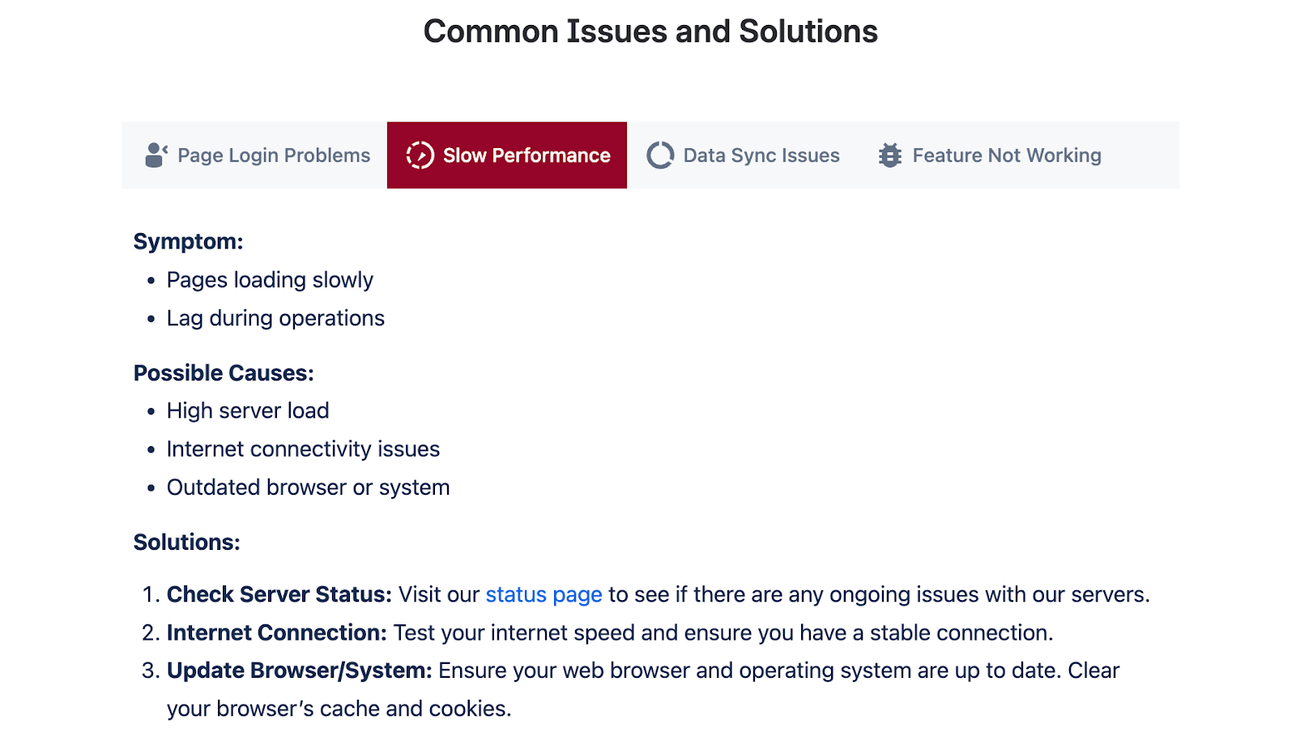
Make it easier for users to self-serve by organising support articles with tabs. Group common problems or solutions by category, such as Login Problems, Slow Performance, or Feature Not Working. This helps users find answers fast without needing to scroll through a long page or raise a support ticket.
Why should you use tabs in Confluence?
Whether you're building a knowledge base, writing documentation, or managing a company intranet in Confluence, your goal is to provide a great user experience. With 69% of customers struggling to find answers on a company site and 79% of employees struggling to find answers on company sites, s, improving the structure of your pages can make users happier and more self-sufficient.
Confluence tabs are the ideal way to do this. By cutting down on clutter and hiding non-essential information, you make it quicker and easier to navigate your Confluence pages.
Make your pages even easier to navigate
Tabs are a great way to present a lot of information on a page without overwhelming users.
However, it's important to remember that not all content is suited to tabs, especially if a natural sequential reading flow is important
If you’re looking for other ways to structure your Confluence pages, we’ve got you covered! Our guide on numbered headings in Confluence is another great way to organise pages with sequences and steps.
Get tabs - and much more - in our complete macro toolkit
Try Mosaic for free and see what you can achieve with your Confluence pages.
Related Content
Read moreWritten by

Senior Content Marketing Manager
As an experienced content marketer and a long-time Confluence user, Hols is passionate about creating educational, accessible guides that help readers go beyond the limitations of their Confluence instance.
Related Content
Read more


